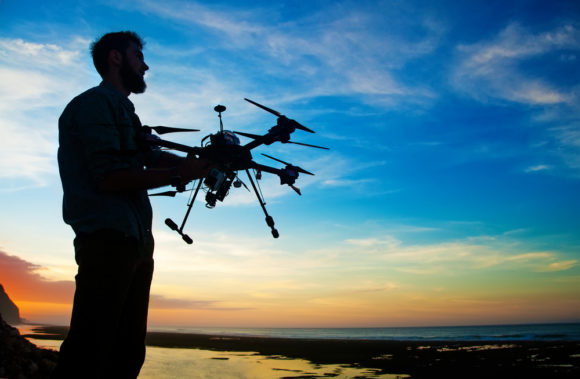If a drone is on your holiday shopping list, be sure to check your insurance coverage before you crack open that instruction manual and take flight.
Damage from a drone is a bit more complicated than handing your kid a baseball and dealing with the wreckage an errant pitch might cause to a window.
There is no official tally of damage caused by drones, yet the roster of high-profile injuries includes musician Enrique Iglesias and Cleveland Indians pitcher Trevor Bauer. And there are internet lists galore, like a database of known U.S. incidents.
A drone operated by Brett Woods, a pilot who co-founded the drone company Aerial Concept Unmanned Systems, was supposed to climb 400 feet, but instead flew into the 27th floor of a building. Luckily, the apartment it breeched was unoccupied, so the damage was chiefly to the drone and the window.
Business insurance covered the damage. But hobbyists and others who buy consumer-level drones cannot be so sure of what is covered if one of their flying devices goes rogue.
For the drone owner, the prevailing insurance coverage would be your homeowners policy or your renters’ policy. But only about 40 percent of renters in the U.S. have coverage, according to the Insurance Information Institute.
The drone itself is covered as personal property, but it might not be worth a claim. The average deductible is $500, which is about what the popular the DJI Phantom 3 standard, with HD video camera, runs on Amazon.com.
Coverage for damage caused by the drone depends on the circumstances, especially if negligence is involved.
“We evaluate every claim on its own merit,” said Justin Herndon, a spokesman for Allstate. Damage to personal property caused by a drone would fall under the basic coverage to a structure. However, homeowners insurance does not cover injuries to family or pets, according to I.I.I. You would have to get coverage for injury through your medical insurance policy.
Coverage for bodily injury to somebody outside the family or for somebody else’s property would fall under the liability portion of a homeowners policy.
If a drone drops out of the sky and damages your car, the damage is covered by the comprehensive section of the auto policy. Drones over 0.55 pounds are required to register with the Federal Aviation Agency. If the drone’s owner can be identified, your auto insurance may file a claim under that person’s home or renters policy, should they have one.
There are other ways to protect yourself, too. Some drone hobbyist clubs offer a group umbrella policy to members, for instance.
A new company, Verifly, provides on-demand policies for consumer drone enthusiasts and commercial users for about $10 an hour, currently approved in 45 states. The user simply geo-locates through an app. The policy covers a quarter-mile radius for up to $1 million of third-party liability and unintentional invasion of privacy. If known hazards are nearby — like a nuclear power plant or a stadium — prices go up.
(Editing by Lauren Young and Andrew Hay)
Was this article valuable?
Here are more articles you may enjoy.



 Howden US Tells Judge Brown & Brown Employees Fled Due to ‘Mistreatment’
Howden US Tells Judge Brown & Brown Employees Fled Due to ‘Mistreatment’  Supreme Court Set to Issue Rulings as Trump Awaits Fate of Tariffs
Supreme Court Set to Issue Rulings as Trump Awaits Fate of Tariffs  Law Firm Faces Sanctions for Failing to Vet Ugandan Claims in $6B 3M Case
Law Firm Faces Sanctions for Failing to Vet Ugandan Claims in $6B 3M Case  Private Equity Firms Expected to Unleash Middle-Market M&A Deals, Survey Says
Private Equity Firms Expected to Unleash Middle-Market M&A Deals, Survey Says 


